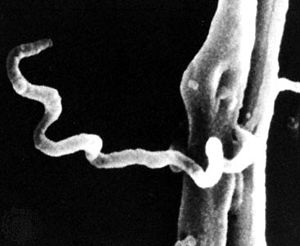Syphilis in Sub-Saharan Africa
Introduction
Caitlin Barker.
Infamous throughout history as one of the most unpleasant, harmful, and silent of sexually transmitted diseases, Syphilis remains a major health issue in the world's most neglected and troubled regions. Although now relatively rare in the United States, with approximately 36,000 cases reported a year and only around 30 fatalities, an estimated 492,000 infants in Sub-Saharan Africa die each year from congenital syphilis [2].
Syphilis presents a severe diagnostic challenge to health care workers around the world, due to the broad and inconclusive nature of its symptoms. Furthermore, this “great imitator” of a disease can also remain unnoticed in infected people for years, thus helping it spread from person to person through sexual contact. Because of this, effective and cheap syphilis screening is essential to its eradication.
Just as syphilis tends to be most prevalent in some of the world's poorest places, it is also strongly correlated with the HIV virus. We will examine the ways in which syphilis can act as a facilitator for the deadly AIDS-causing virus, and how health workers are attempting to address this issue. We will also look at congenital syphilis, and why it is that such an easily-preventable disease still kills thousands every year.
Treponema Pallidum and Transmission
Syphilis is caused by infection of a bacterium called treponema pallidum, a bacterium of the spirochete phylum. Like all spirochetes, it is corkscrew-shpaed and Gram-negative [4].
Stages, Diagnosis, and Treatment
Syphilis and HIV
Congenital Syphilis
Current Issues
Conclusion
References
4."STD Facts - Syphilis." Centers for Disease Control and Prevention. CDC, n.d. Web. 7 Dec. 2009.
Edited by student of Joan Slonczewski for BIOL 191 Microbiology, 2009, Kenyon College.


